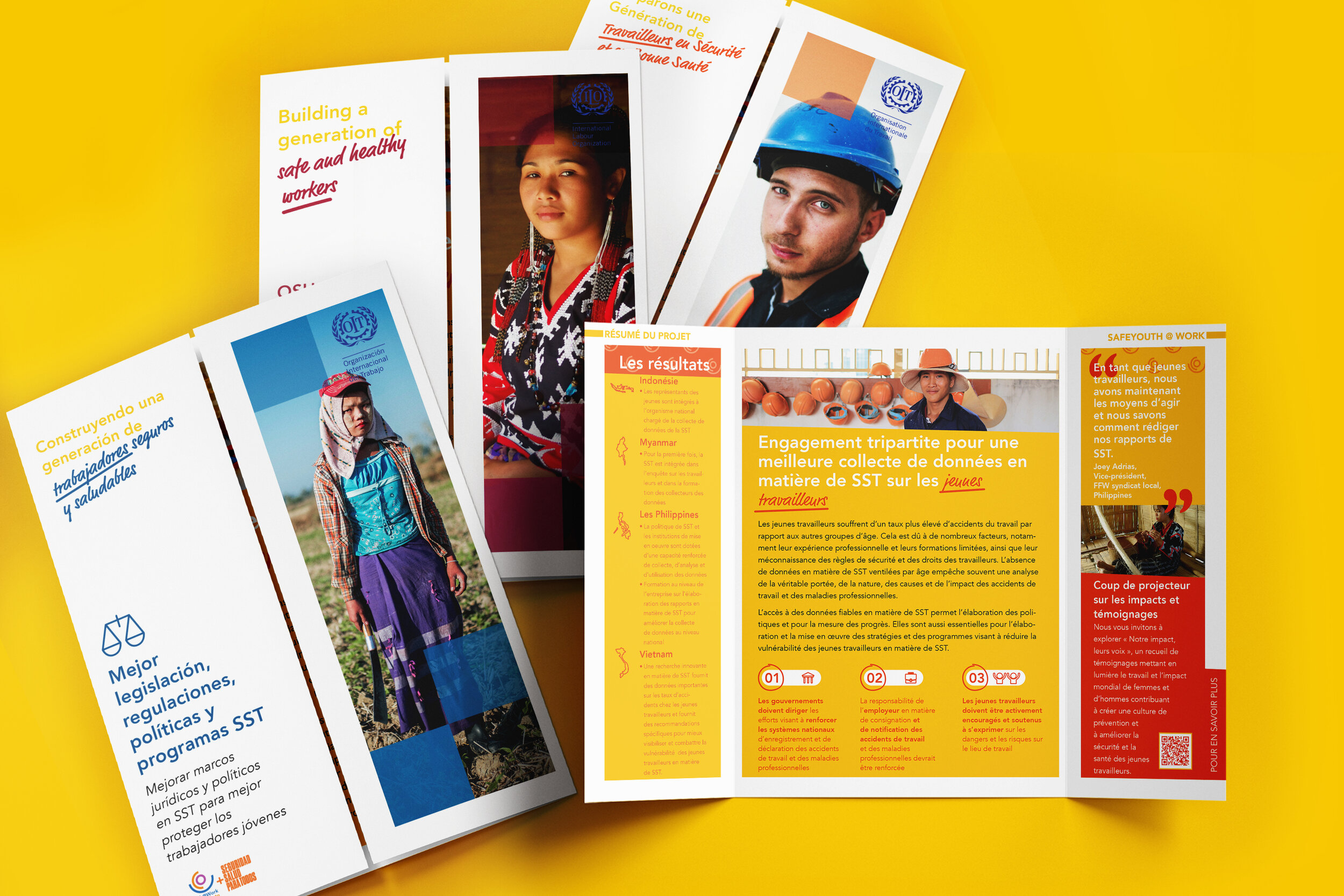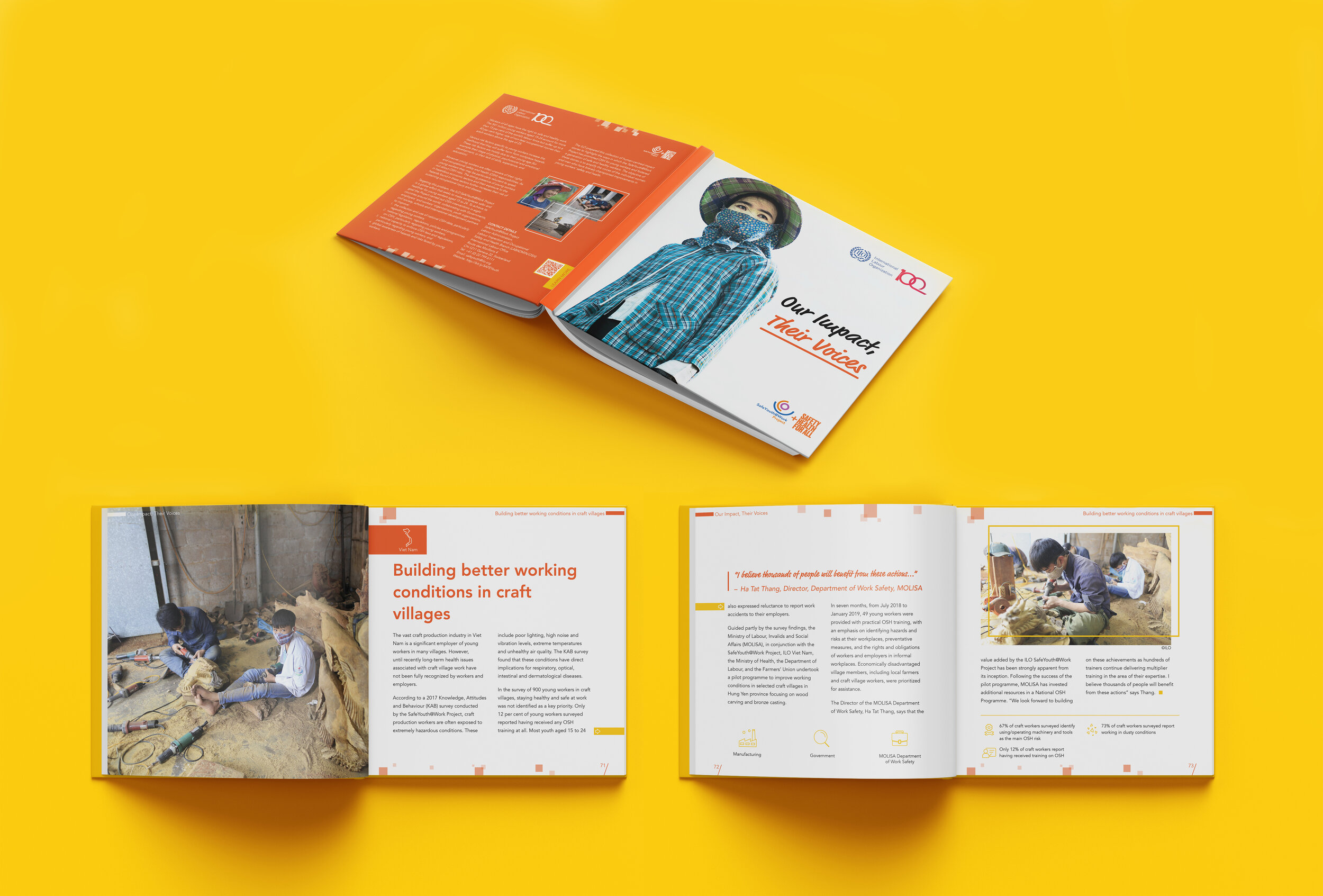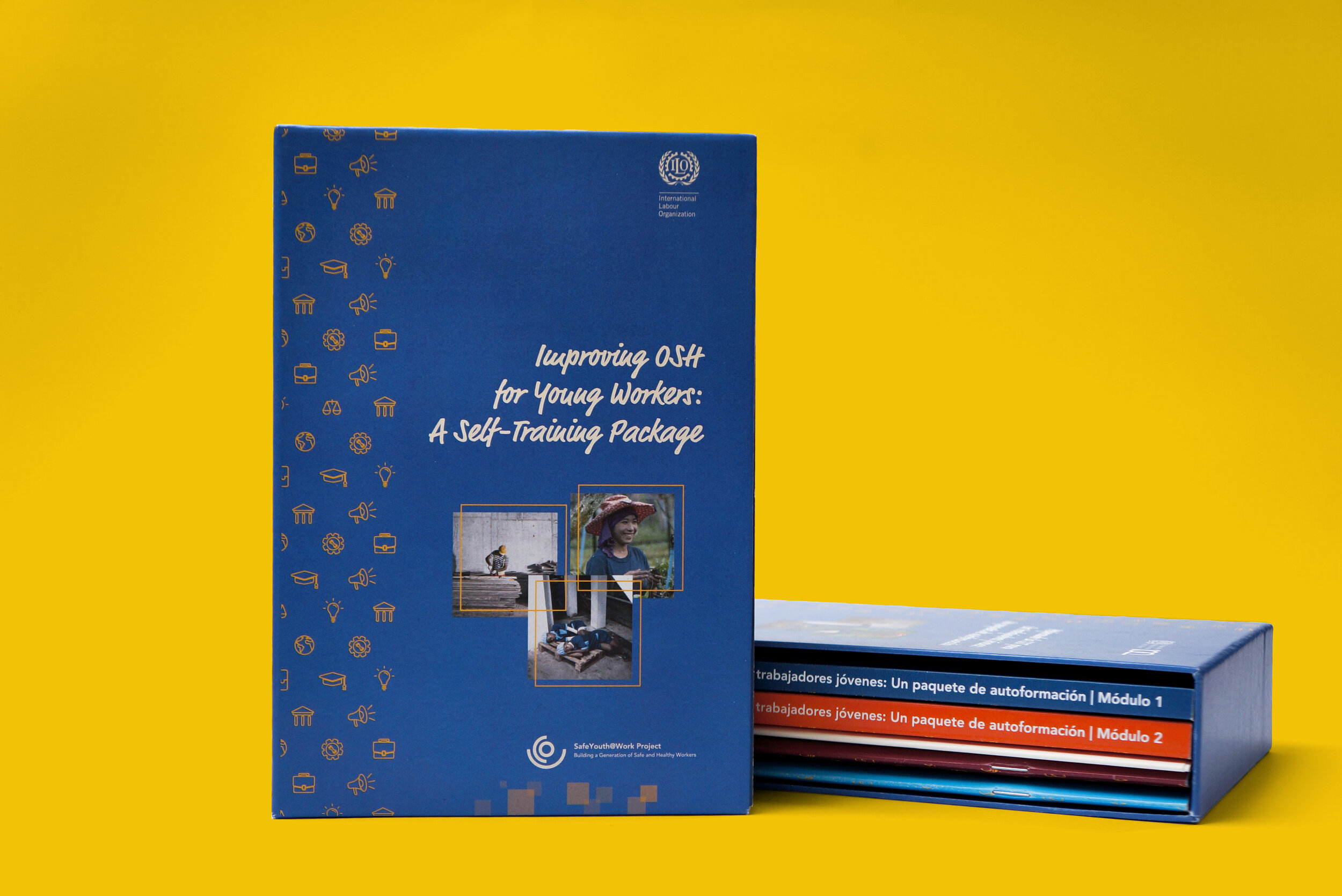Building a Generation of Safe and Healthy Workers
Documenting successes of the SafeYouth@Work Project, which spanned eight countries and four years of intensive advocacy, research, policy support, capacity building and awareness raising on the specific workplace safety and health (OSH) concerns of young workers.
CLIENT
International Labour Organization, SafeYouth@Work Project
THE CHALLENGE
Document the multiyear impact of the SafeYouth@Work Project on improving OSH for young workers in the agricultural, manufacturing and construction sectors, and raising awareness on the key achievements
THE OUTCOME
Project visual identity rebranding, and development of a comprehensive communications and knowledge materials package (Project Briefs, thematic videos, Impact Stories book, Project Self-Training Package, social media campaign, End-of-Project workshop materials all delivered in English, Spanish and French); Printing on recycled materials and delivered to Italy and Switzerland
The key to successful development cooperation is not just implementing a Project well but telling the story effectively to diverse audiences. The comprehensive end-of-Project communications materials developed by FBD allowed us to tell our story in ways that will connect with stakeholders, especially including the Project donor. The various materials, expertly prepared by FBD, will give the story of the Project sustainability long after its activities have concluded.
- Nicholas Levintow, Chief Technical Adviser and Project Lead, ILO SafeYouth@Work Project
Every single day, approximately 7,600 people die from occupational accidents or diseases, and more than one million people suffer an injury on the job. Younger workers experience the highest rate of work-related injuries, due to many causes, including a lack of awareness of safety rules and worker rights; limited job skills and work experience; a lack of training in job tasks or hazard prevention; long working hours; inadequate supervision; and, unsuitable job assignments.
The SafeYouth@Work Project, a cornerstone of the ILO’s Global OSH Flagship Programme – “Safety and Health for All”- brought young people to the table to develop solutions to improve OSH for young workers and to promote a culture of workplace prevention.
From 2015 through 2019, the Project promoted the safety and health of young workers in eight different countries, with a particular focus on those aged 15-24, who are more vulnerable to occupational injuries and disease, and who as they join the workforce are essential contributors to a sustainable and prevention-focused OSH culture.
One of ILO’s key priorities was to document key achievements and implement a global communications campaign to use in a wide array of learning dissemination events at the end of the year, feeding into the Project sustainability strategy.
Future by Design provided comprehensive communications and graphic design support in producing a full set of communication products around Project results achieved, key lessons learned, most significant change stories of beneficiaries, and key messaging around key Project Objectives. The final products include:
Project Briefs on Data, Law, Capacity and Awareness,
Documentary videos on Occupational Safety and Health & Youth, Safer Working Conditions, Training and Engagement and Empowerment,
Impact Stories book, with more than 20 human-centred stories to amplify the voices of the individual women and men who bravely championed improvements in young workers’ safety and health,
Project Self-Training Package, with five user-friendly training booklets, which encourage the reader to apply what they are learning on OSH for young workers, through a range of activities, quizzes, a learning journal and action guides,
End-of-Project workshop materials,
Social media campaign.
Products were delivered in English, Spanish and French, and targeted partnering government officials, employers’ and workers’ organizations, ILO officials and young workers.










